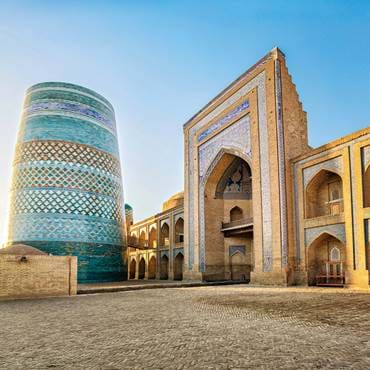
Uzbekistan
Uzbekistan in Central Asia, is a landlocked country. In ancient times, Uzbekistan was part of the Iranian-speaking region of Transoxiana and Turan. Scythians, Eastern Iranian nomads, were the first recorded settlers. In the 7th century, the Muslim conquest converted the majority of the population, including the local ruling classes, into adherents of Islam. Cities such as Samarkand, Khiva and Bukhara, during this period, saw wealth grow from the Silk Road. Central Asia as a whole and the local Khwarezmian dynasty, were destroyed by the Mongol invasion in the 13th century. Following the Mongol Conquests, the area was dominated by Turkic peoples. In the 16th century, the area was conquered by Uzbek Shaybanids, moving the centre of power from Samarkand to the city of Bukhara. This was perhaps Central Asia’s most complete example of a medieval city, long a centre for Islamic theology and scholarship. In modern times, it heralds a plethora of striking mosques, mausoleums, and madrasahs – the most magnificent at the Registan – a landmark of Islamic architecture in historic Samarkand.
Upcoming Departures
15 days
£5,770
13 September 2024
 GB
GB
 US
US




